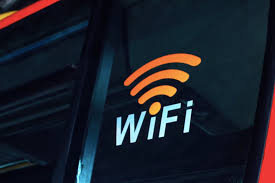In today’s fast-paced world, public Wi-Fi has become more of a necessity than a luxury. From coffee shops to libraries, public spaces provide free internet access to help people stay connected, complete work, and enjoy entertainment. However, managing this service effectively, especially in high-traffic areas, can be challenging. One innovative solution that has emerged is the implementation of pause time features in public Wi-Fi systems. This article will explore how pause time can enhance user experience and administrative efficiency, ensuring a balanced and fair usage of resources.
Understanding Pause Time Features in Public Wi-Fi
Pause time in public Wi-Fi refers to a control mechanism that temporarily disconnects users after a certain period of use. This feature is designed to prevent a single user from monopolizing the Wi-Fi service for extended periods, thereby allowing fair access to all users. For instance, a coffee shop might set a pause time of 30 minutes, after which the user must reconnect or take a break before resuming use.
The primary benefits of implementing a pause time feature include:
- Enhanced Network Performance: By periodically disconnecting users, the network avoids being overloaded by long-term, high-bandwidth activities such as video streaming or large downloads.
- Fair Access for All Users: It ensures that no single user hogs the bandwidth, providing an equal opportunity for everyone to access the internet.
- Encouragement of Turnover in High-Demand Areas: In places like cafes, where seating is limited, pause times can encourage turnover, making space for new customers.
- Improved Security: Shorter connection intervals can reduce the window for potential cyber attacks on a public network.
Steps to Implement Pause Time Features
Implementing an effective pause time feature involves several key steps that can help ensure its success and acceptance among users:
1. Determine Optimal Pause Time
The first step is to assess the average usage patterns and determine an appropriate pause time. This varies greatly depending on the location. For instance, a pause time at an airport might be longer than at a café due to the different nature of stay and usage.
2. Choose the Right Technology
Select a Wi-Fi service management system that supports pause time features. Ensure the system is robust, scalable, and can handle the expected number of users without faltering. An excellent example of such technology is the lpb piso wifi 10.0.0.1 pause time login, which includes an easy-to-use pause time feature accessible via the 10.0.0.1 pause time login.
3. Communicate Clearly with Users
It’s crucial to inform users about the Wi-Fi management policies, including the pause time. Clear signage or a login page notification can help manage expectations and reduce frustration. To learn more about implementing pause time features effectively, visit lpb piso wifi pause time.
4. Monitor and Adjust
Once implemented, continuously monitor the system to ensure it meets user needs and adjust the pause time as necessary. Gathering feedback from users can also provide valuable insights into how the system is performing and whether any changes are needed.
5. Ensure Compliance with Legal and Ethical Standards
Make sure that the implementation of such features complies with local laws and regulations regarding digital communications and privacy.
Best Practices for Managing Public Wi-Fi with Pause Time
To maximize the effectiveness of pause time features, consider the following best practices:
A. Balance Flexibility with Control
While it’s important to control bandwidth usage, providing some flexibility can improve user satisfaction. For instance, offering a one-time “pause time extension” can accommodate users who may occasionally need more time.
B. Use Adaptive Pause Times
Consider implementing adaptive pause times that could vary based on the time of day or current network load. This approach can help manage the network more dynamically based on real-time demand.
C. Enhance User Experience
Even with pause times, ensure that the overall user experience is positive. This includes providing a fast and secure connection during the allowed usage time and ensuring easy reconnection after a pause.
D. Promote Digital Well-being
Pause times can also promote digital well-being by encouraging users to take breaks from screen time. This can be an additional selling point for health-conscious spaces like libraries or schools.
E. Integrate with Other Services
For businesses, integrating Wi-Fi access with other services can be beneficial. For example, customers at a café might receive notifications about special offers or events via the Wi-Fi system during their pause period.
Conclusion
Managing public Wi-Fi access with pause time features offers a smart way to handle the challenges of providing free internet in public spaces. By implementing these systems thoughtfully and ethically, businesses and public institutions can improve service quality, ensure fair access, and even enhance customer satisfaction. As public Wi-Fi continues to evolve, embracing innovative management tools like pause time will be key to staying ahead in providing valuable digital services to the public.
Also Read: Meach How Is Age
